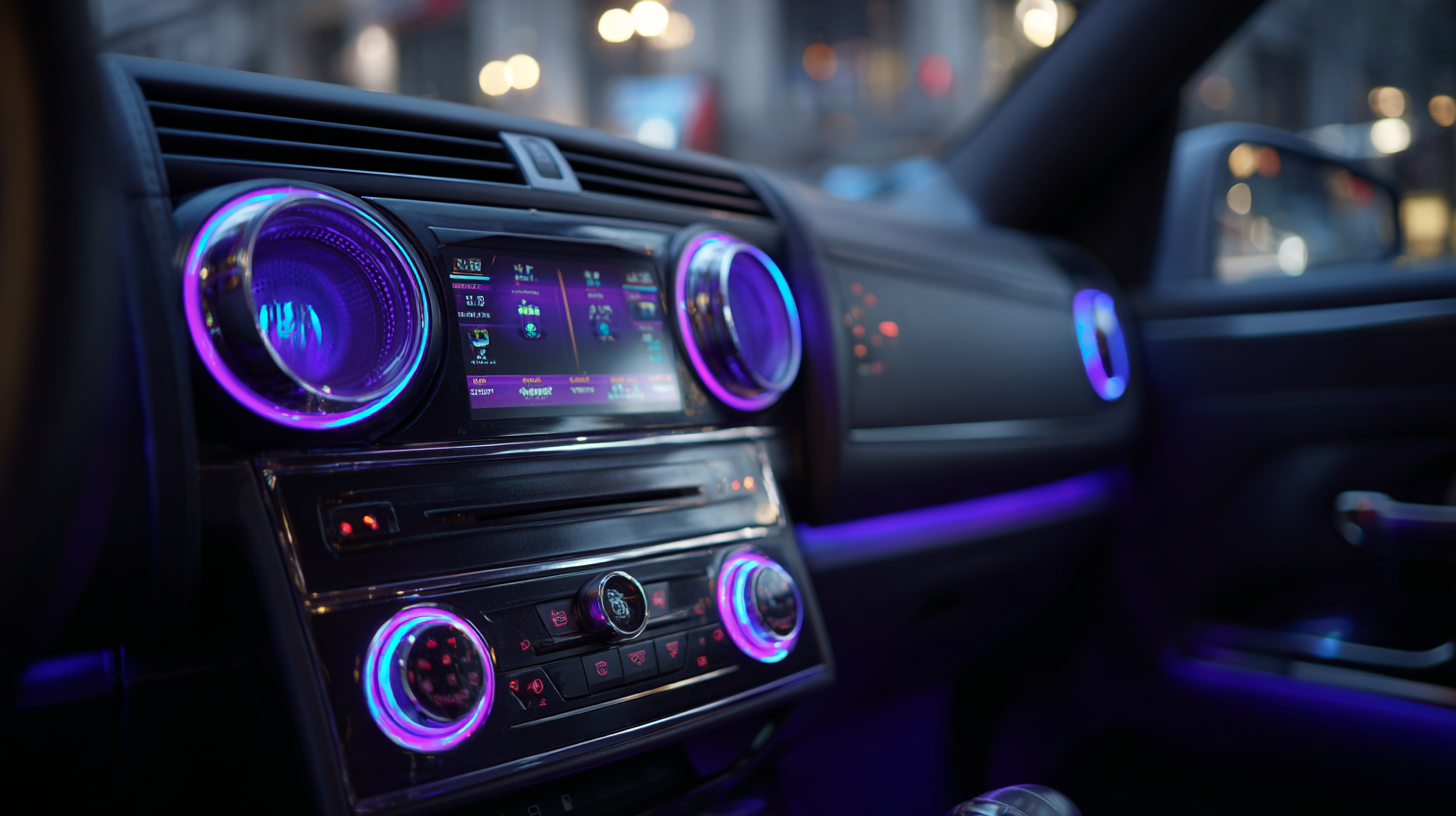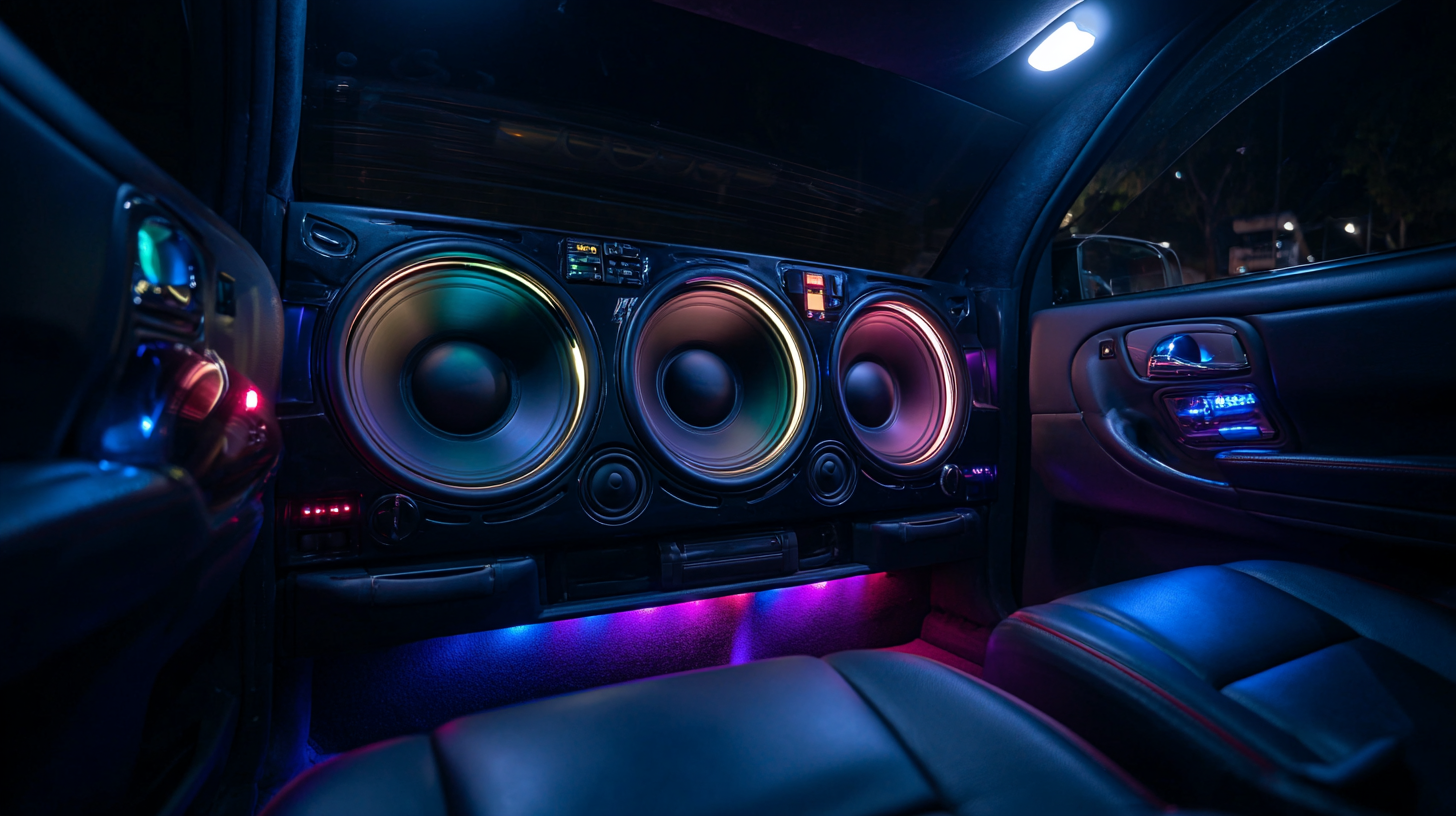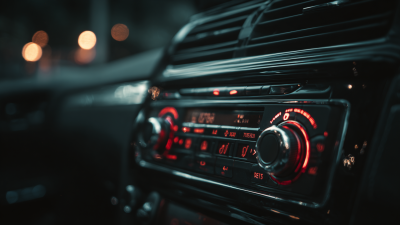 +86-18126757325
+86-18126757325



In today's automotive landscape, the importance of a high-quality car audio system cannot be overstated, as nearly 70% of drivers consider audio quality a key factor when selecting a vehicle, according to a report by J.D. Power. With advancements in technology and increasing consumer expectations, the car audio market is projected to reach $11 billion by 2027, driven by the growing demand for enhanced in-car entertainment experiences. Choosing the best car audio system for your vehicle involves understanding various components and features, from speakers and amplifiers to head units and connectivity options. This guide aims to simplify the selection process, ensuring that you make an informed decision to elevate your driving experience with superior sound quality and performance. Exploring these options will not only enhance your enjoyment on the road but also add value to your vehicle.

When it comes to enhancing your vehicle's audio experience, understanding your vehicle's audio needs is essential. Every car has unique acoustic characteristics, which can significantly influence the performance of an audio system. Factors such as the size of the cabin, material of the seats, and placement of speakers all come into play. First, assess what kind of audio experience you desire—do you prefer crisp vocals and lively beats, or immersive bass that makes you feel the music? This understanding will help you choose between basic systems and more advanced ones, including those with crossovers designed to optimize sound output across different frequency ranges.
Next, consider the shift in consumer demand towards premium audio systems. The rise in expectations for high-quality sound has pushed automotive brands to incorporate more sophisticated technology into their vehicles. With innovations such as vibrating actuators replacing traditional speakers, the focus is now on delivering a richer and more engaging auditory experience. By evaluating your personal preferences and staying informed about advancements in audio technology, you can make an informed decision that transforms your driving experience into a concert on wheels.
When selecting the best car audio system for your vehicle, it's crucial to focus on key features that enhance your listening experience. Firstly, sound quality is paramount. Look for systems equipped with high-quality speakers that can reproduce a wide frequency range, ensuring clear highs and deep bass. Consider components like tweeters and subwoofers, which can significantly improve the overall audio fidelity. Additionally, check for sound customization options such as equalizers, which allow you to tailor the audio to your personal preferences and the acoustic properties of your car.
Connectivity options are another essential feature to evaluate. Modern car audio systems should support Bluetooth, USB, and auxiliary inputs, providing seamless integration with your smartphone or other devices. This allows you to stream music or make calls hands-free, enhancing both convenience and safety while driving. Furthermore, compatibility with streaming services and voice recognition technology can be a game-changer, offering you easy access to your favorite playlists and podcasts without distraction. Paying attention to these key features will help you choose a car audio system that delivers an outstanding auditory experience on the road.

When it comes to selecting the best car audio system for your vehicle, understanding the different types available is crucial. There are typically three main categories: factory-installed systems, aftermarket systems, and high-end custom setups.
Factory-installed systems are the most common, offering basic sound quality and functionality but may lack the depth and clarity that audiophiles crave. If you are someone who enjoys a decent listening experience without breaking the bank, this option can serve you well.
On the other hand, aftermarket systems provide a significant upgrade compared to factory-installed ones. These systems come in various configurations, including head units, amplifiers, and speakers, allowing for a fully customizable audio experience. Many manufacturers offer packages tailored to specific tastes, whether you prefer deep bass, clear vocals, or balanced sound.
For true music lovers, high-end custom setups are the ultimate choice, involving bespoke installations that can dramatically enhance audio quality. Investing in this option often means working with audio professionals to create a system that perfectly fits your vehicle and listening preferences.
When budgeting for your car audio upgrade, it's essential to start by determining how much you're willing to spend.
Setting a clear budget will help you narrow down your options and avoid overspending. Consider the different components you may need, such as speakers, amplifiers, and head units. Each of these components can vary significantly in price, so understanding your priorities will help you make informed decisions.
Tip: Research the average prices for the specific components you’re interested in. This can give you a realistic idea of what you’ll need to invest. Don’t hesitate to look for packages that include multiple elements at a discounted rate, which can be more cost-effective than purchasing items separately.
Another vital aspect to consider is installation costs. While some may choose to install the system themselves, hiring a professional can save you potential headaches and ensure everything is done correctly. Factor in these costs when setting your budget to avoid any surprises later on.
Tip: Ask local audio shops for installation quotes before making any purchases. This will provide you with a clearer picture of your total investment and help you allocate your funds more efficiently for the best sound experience in your vehicle.

When installing a car audio system, focusing on the correct placement and connection of components is essential for optimal performance. Start by selecting the right location for your speakers. Ideally, speakers should be mounted at ear level and angled towards the listeners to create a more immersive sound stage. Consider using sound-deadening materials in the doors or rear deck where speakers are installed to reduce vibrations and enhance sound clarity.
Next, the head unit should be compatible with your vehicle's electrical system. Proper grounding is critical to avoid noise interference, so ensure the ground cable is securely connected to a clean metal surface. Utilize high-quality wiring and connectors for seamless signal transmission. After installation, spend time fine-tuning your audio settings. Adjust the equalizer to match your personal taste and the acoustics of your vehicle. Taking the time to set gain levels and crossover settings correctly will help prevent distortion and ensure that each component functions optimally, delivering a rich and enjoyable audio experience while you drive.
| Component | Description | Considerations | Installation Tip |
|---|---|---|---|
| Head Unit | The main control panel for the audio system, often includes Bluetooth and navigation. | Check compatibility with your vehicle and ensure it has the features you want. | Follow vehicle-specific wiring diagrams for a seamless installation. |
| Speakers | Devices that convert electrical signals into sound; choose between full-range or component systems. | Consider the size and power handling to match your head unit. | Use sound deadening material to reduce vibrations and enhance sound quality. |
| Subwoofer | Enhances low-frequency sounds, providing a richer audio experience. | Choose the right size for your space and power requirements. | Secure enclosure to minimize rattling and optimize sound output. |
| Amplifier | Boosts audio signals for better sound quality and volume. | Consider the power rating and number of channels based on your setup. | Mount it securely with adequate ventilation. |
| Wiring | Connects all components of the audio system. | Use high-quality cables to prevent signal loss. | Label wires for easy identification and organization. |






